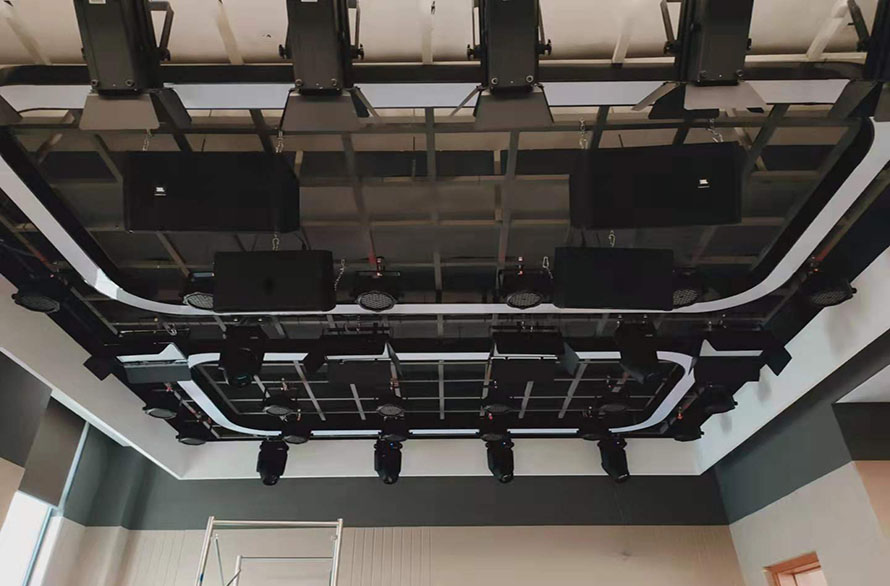提起舞臺音響設備中的調音臺,會有很多種形容法,貼切的莫過于把調音臺當成一個音響系統的心臟了,這個心臟血液循環的如何,直接影響到整個系統的穩定性。血為液體,水也是液體,這兩種物質同樣重要。那么對調音臺的操作有哪些技巧呢?
There are many ways to describe the mixer in stage audio equipment. The most appropriate way is to regard the mixer as the heart of an audio system. The blood circulation of this heart directly affects the stability of the whole system. Blood is a liquid and water is also a liquid. These two substances are equally important. So what are the skills for the operation of the mixer?
1.調音臺的信號輸入。
1. Signal input of mixer.
調音臺的輸入信號大體上分為低阻話筒信號輸入和高阻線路信號輸入兩種。每一路輸入都可以把它看成一條水管,也就是如果一個調音臺有多路信號輸入就好像是有多條水管的水流到調音臺里進行處理一樣。可以把低阻和高阻的區分看成是水壓力或流水速度的不同。
The input signal of the mixer is generally divided into low resistance microphone signal input and high resistance line signal input. Each input can be regarded as a water pipe, that is, if a mixer has multiple signal inputs, it is like the water flow of multiple water pipes to the mixer for processing. The distinction between low resistance and high resistance can be regarded as the difference of water pressure or water velocity.
2.調音臺通道增益的調整。
2. Adjustment of channel gain of mixer.

要輸入到調音臺里的音源,要分清它是低阻還是高阻,然后用標準的信號線正確的連接到調音臺上。如果要讓每一路音源都達到音質,就需要仔細的調整了。調音臺每個輸入通道的增益是很重要很關鍵的,但好多音響師好像只是把增益簡單的看成了是一個音量旋鈕而已,這樣就大錯特錯了。其實增益主要是用來控制輸入信號動態范圍的,一般增益調到大不失真時就是大的有效動態范圍了,也是好的效果狀態了。
To input the sound source into the mixer, first distinguish whether it is low resistance or high resistance, and then correctly connect it to the mixer with a standard signal line. If you want every sound source to achieve sound quality, you need to adjust it carefully. The gain of each input channel of the mixer is very important and critical, but many sound engineers seem to simply regard the gain as a volume knob, which is a big mistake. In fact, the gain is mainly used to control the dynamic range of the input signal. Generally, when the gain is adjusted to large without distortion, it is a large effective dynamic range and a good effect state.
3.調音臺通道均衡組的調整。
3. Adjustment of mixer channel equalization group.
當增益調好后,一般接下來就要調整調音臺通道的均衡組了,調整的順序應該是先從低音部分調起,再調中高音部分。因為只有保證了聲音的基礎音,才能保證聲音良好的多次泛音。
After the gain is adjusted, it is generally necessary to adjust the equalization group of the mixer channel next. The adjustment sequence should be from the bass part to the treble part. Because only by ensuring the basic sound of the sound can we ensure a good multiple overtones of the sound.
現在調音臺的均衡組一般都帶有選頻調整,好比如說在放的士高音樂時,感覺低音力度不夠,可以把的士高音樂所在通道均衡組的低音頻率選在200Hz左右,然后用調節旋鈕進行適度的提升,這樣低音力度就出來了。
Now, the equalization group of professional mixer is generally equipped with frequency selection adjustment. For example, when playing disco music, I feel that the bass strength is not enough. You can select the bass frequency of the equalization group of the channel where the disco music is located at about 200Hz, and then use the adjustment knob to appropriately improve the bass strength.
如果運用靈活了,還可以用均衡組的選頻功能來抑 制聲反饋,比如一般舞廳內300Hz左右都會有個共振峰,往往這個頻率容易產生聲反饋,可以把話筒輸入通道的頻率選在300Hz左右,然后用調節旋鈕進行適度的衰減,這樣就可以有效的減少聲反饋了。
If the application is flexible, you can also use the frequency selection function of the equalization group to suppress the acoustic feedback. For example, there will be a formant at about 300Hz in the general ballroom. Often, this frequency is easy to produce acoustic feedback. You can select the frequency of the microphone input channel at about 300Hz, and then use the adjustment knob for moderate attenuation, so as to effectively reduce the acoustic feedback.
當然每個聲場產生聲反饋的頻率是不一樣的,但不管是什么頻率的聲反饋,都可以用這種方法簡單控制下,當然這個需要根據經驗來靈活控制。而且要調整聲場和避免聲反饋是需要用多段均衡器或反饋抑 制器來調整的。
Of course, the frequency of acoustic feedback generated by each sound field is different, but no matter what frequency the acoustic feedback is, it can be simply controlled in this way. Of course, it needs to be flexibly controlled according to experience. Moreover, to adjust the sound field and avoid acoustic feedback, professional multi-stage equalizer or feedback suppressor is needed to adjust.


 魯公網安備 37010202002516號
魯公網安備 37010202002516號